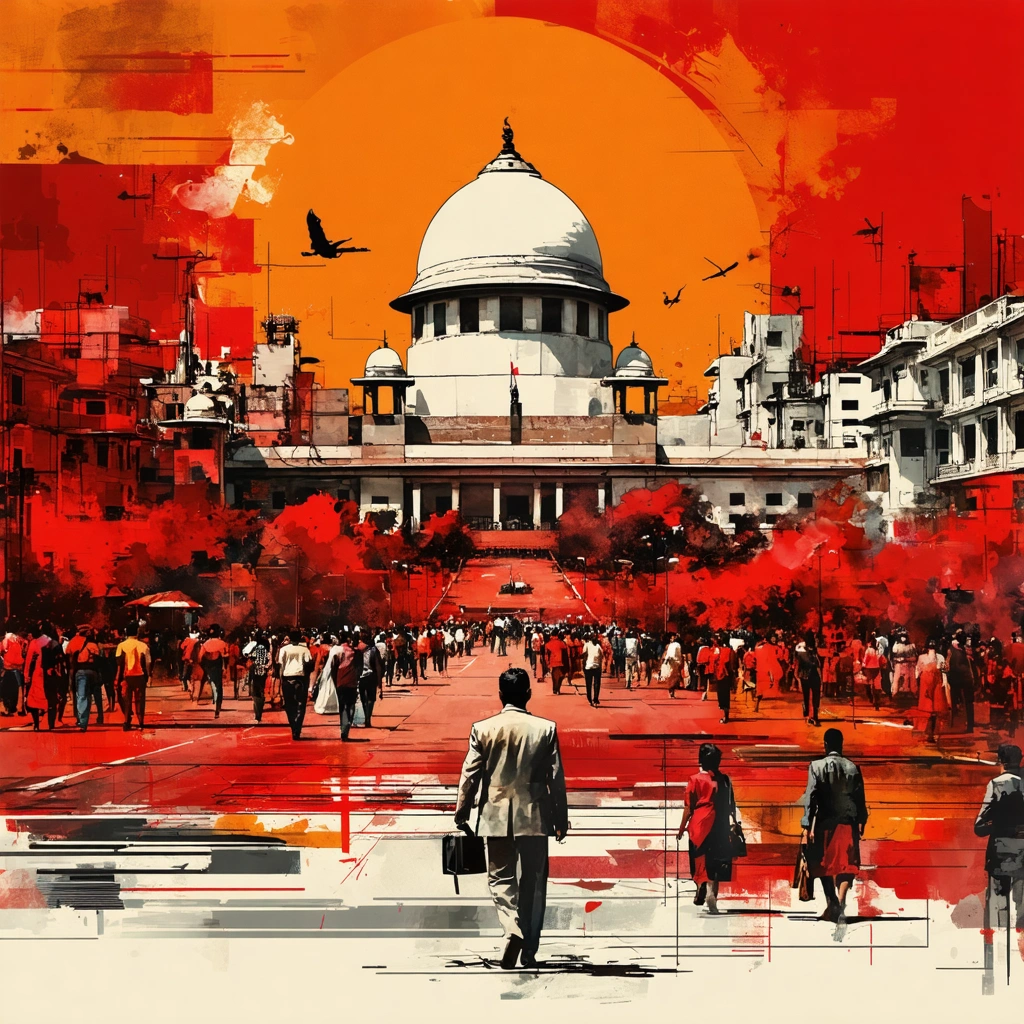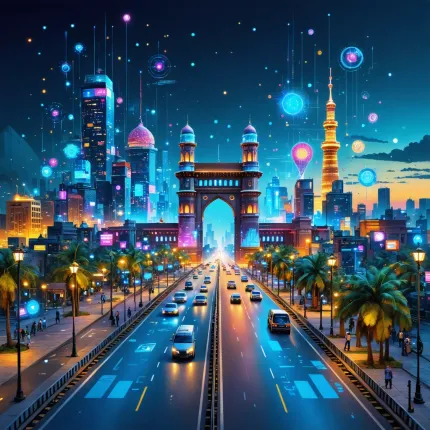The Ever-Shifting Pulse of Indian News
Imagine waking up on a typical morning in 2025. You reach for your phone, craving a quick update on the latest headlines, but instead of just a handful of channels, you find yourself immersed in an ocean of news outlets, each vying for your attention with breaking stories, live debates, and real-time updates. The Indian news media landscape has evolved into a bustling, dynamic ecosystem that reflects the country’s diversity, complexity, and rapid technological change. Navigating this landscape can feel like trying to catch a train that never stops moving.
Channels like Aaj Tak News, NDTV News, and Republic Bharat News have become household names, but they no longer operate in isolation. The digital revolution, coupled with shifting viewer preferences and an ever-expanding array of platforms, has fundamentally transformed how news is produced, consumed, and trusted. For the everyday consumer, this shift brings both excitement and confusion. With so many voices clamoring to be heard, how do you discern fact from fiction, breaking news from noise? And how do these media giants maintain relevance amid fierce competition and rapidly changing technology?
Why Staying Updated Feels More Complicated Than Ever
At first glance, more news options seem like a clear benefit—but the reality is far more nuanced. While Aaj Tak News continues to dominate with its crisp Hindi bulletins and extensive regional coverage, NDTV News has carved a niche by blending in-depth analysis with a strong digital presence. Meanwhile, Republic Bharat News pushes the envelope with aggressive reporting and a focus on nationalistic narratives, appealing to a particular segment of viewers.
What makes this landscape tricky is the sheer volume of news and the speed at which it travels. In 2025, a viral social media clip or a trending hashtag can trigger widespread discussions and even influence political decisions within hours. But this speed comes at a cost: misinformation and sensationalism can spread just as fast. For many, this creates a sense of overwhelm and skepticism. Are you getting the full picture? Can you trust the sources you’ve long relied on? Even the most reputable channels face the challenge of balancing speed with accuracy.
There’s also the challenge of fragmentation. India’s linguistic and cultural diversity means that a one-size-fits-all approach to news simply doesn’t work anymore. The rise of regional news platforms and vernacular content providers has democratized information but also complicated the media ecosystem. Understanding the interplay between national giants like Aaj Tak News and localized players is crucial for anyone wanting to stay truly informed.
How to Navigate India’s News Media Maze in 2025
So, what’s the way forward? The key is understanding the evolving roles of these major news outlets and adopting a more discerning approach to news consumption. Here’s what you need to keep in mind:
- Diversify your sources: Relying solely on one channel can limit perspective. Mix it up with Aaj Tak News for regional insights, NDTV News for detailed investigative pieces, and Republic Bharat News for a different ideological viewpoint. This helps build a more balanced understanding.
- Leverage technology: Many outlets now offer AI-powered news summaries, personalized alerts, and podcasts that fit into busy schedules. Using these tools smartly can keep you updated without feeling overwhelmed.
- Be a critical consumer: Question headlines, verify facts, and avoid sharing unverified content. The responsibility of accurate news consumption increasingly falls on you, the reader.
- Engage with community discussions: Online forums and social media groups centered around news can offer diverse opinions and grassroots perspectives often missed by mainstream channels.
In essence, staying updated with India’s news media in 2025 isn’t just about tuning into your favorite channel anymore. It’s about embracing a multifaceted approach that recognizes the strengths and weaknesses of each platform. As we move forward, understanding this landscape will empower you not just to consume news, but to engage with it meaningfully—shaping informed opinions and participating actively in the world around you.
In the following sections, we’ll delve deeper into how Aaj Tak News, NDTV News, and Republic Bharat News are adapting to this new age, and offer practical tips on making the most of the rich, sometimes chaotic, news landscape of India in 2025.

India’s News Media Landscape in 2025: A Comprehensive Overview
What does India’s news media landscape look like in 2025?
India’s news media landscape in 2025 is characterized by rapid digital transformation, increased consumption through multiple platforms, and a diverse range of news outlets catering to millions of viewers and readers. Traditional television news channels such as Aaj Tak News, NDTV News, and Republic Bharat News continue to maintain strong footholds, while digital-native news platforms and social media are rapidly reshaping how news is delivered and consumed.
By 2025, the Indian news media has embraced advanced technologies like AI-driven news curation, real-time fact-checking, and immersive multimedia storytelling, making news more accessible and engaging across languages and regions. The competition among news channels has heightened, compelling them to innovate content delivery, especially for younger audiences who prefer mobile and on-demand news consumption.
Why are channels like Aaj Tak News, NDTV News, and Republic Bharat News significant in India’s media space?
These three channels represent key pillars of India’s broadcast journalism with distinct editorial styles and audience reach:
- Aaj Tak News is one of India’s most-watched Hindi news channels, known for its comprehensive coverage of national events, breaking news, and political developments. It has effectively leveraged digital platforms to expand its audience base.
- NDTV News is renowned for its in-depth reporting, investigative journalism, and English-language broadcasts, catering to urban and international audiences. NDTV’s credibility and analytical approach have made it a trusted source for many viewers.
- Republic Bharat News has carved a niche with its dynamic presentation style and emphasis on nationalist narratives, appealing to a dedicated viewer segment. It is also significant for pioneering aggressive debates and primetime shows.
Understanding their editorial differences and audience engagement strategies is essential for grasping the overall media dynamics in India.
How is digital transformation reshaping India’s news media in 2025?
Digital transformation is central to the evolution of India’s news media. With over 900 million internet users in India as of 2025, news consumption is increasingly shifting towards digital platforms, including mobile apps, social media, and OTT channels.
News outlets like Aaj Tak News, NDTV News, and Republic Bharat News have invested heavily in their digital presence, offering live streaming, personalized news feeds, and interactive content. This shift has led to:
- Faster dissemination of breaking news and live updates
- Greater audience engagement through comments, polls, and social media integration
- Use of AI and machine learning to tailor content based on viewer preferences
- Enhanced multimedia reporting with videos, infographics, and podcasts
Consequently, news media in India is no longer confined to television or print but exists in a dynamic, multi-platform ecosystem.
What challenges does India’s news media face in 2025?
Despite its growth, India’s news media grapples with several challenges:
- Credibility and Misinformation: The proliferation of fake news and misinformation, especially on social media, has pressured reputable channels like NDTV News and Aaj Tak News to bolster fact-checking mechanisms.
- Political Polarization: Media outlets such as Republic Bharat News often face criticism for biased reporting, which reflects wider political divides impacting public trust.
- Revenue Models: Shifting from traditional advertising to digital revenue streams like subscriptions and sponsored content requires strategic adaptation.
- Regulatory Environment: Increasing scrutiny and regulations around media freedom and content governance influence editorial decisions and operational freedom.
Addressing these issues is critical to sustaining a healthy, vibrant news environment in India.
How can audiences stay updated with India’s dynamic news media in 2025?
To stay informed with ongoing developments in India’s news media, consider these strategies:
- Follow key news channels such as Aaj Tak News, NDTV News, and Republic Bharat News across their TV broadcasts and official digital platforms.
- Utilize news aggregators and apps that consolidate headlines from multiple sources for a balanced perspective.
- Engage with verified social media accounts of trusted journalists and media houses to get real-time updates.
- Subscribe to newsletters and podcasts by leading media outlets for in-depth analysis and expert commentary.
- Stay critical of sources and cross-verify information to avoid misinformation.
By adopting these habits, audiences can navigate India’s multifaceted news media landscape effectively and remain well-informed.
What is the future outlook for India’s news media beyond 2025?
Looking ahead, India’s news media is expected to continue evolving with technological advancements and changing consumer behavior:
- Increased Personalization: AI-powered news delivery will create more customized content experiences.
- Integration of Augmented Reality (AR) and Virtual Reality (VR): Immersive news storytelling may become mainstream, enhancing user engagement.
- Greater Emphasis on Regional and Vernacular Content: To tap India’s vast linguistic diversity, more news providers will produce content in local languages.
- Strengthening of Media Ethics and Fact-Checking: Media organizations will likely invest more in maintaining credibility to counter misinformation.
Channels like Aaj Tak News, NDTV News, and Republic Bharat News will play pivotal roles in shaping this future, balancing innovation with journalistic integrity.




